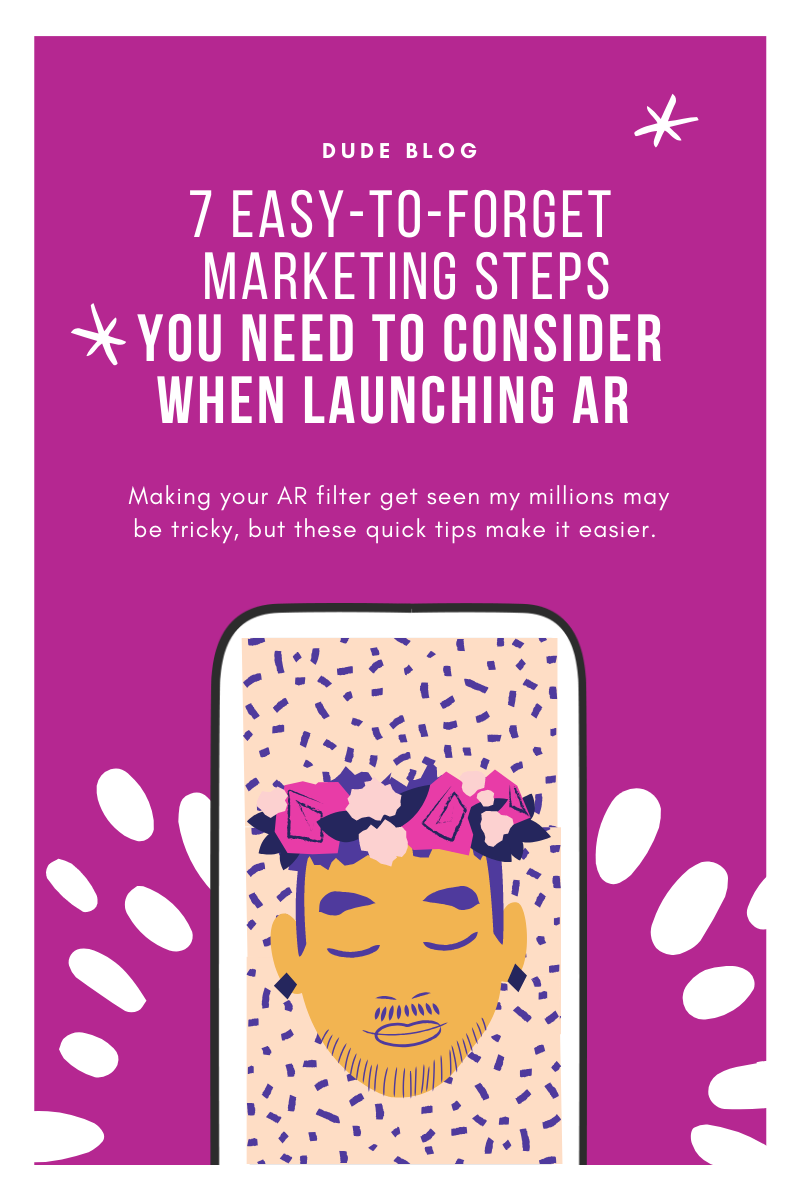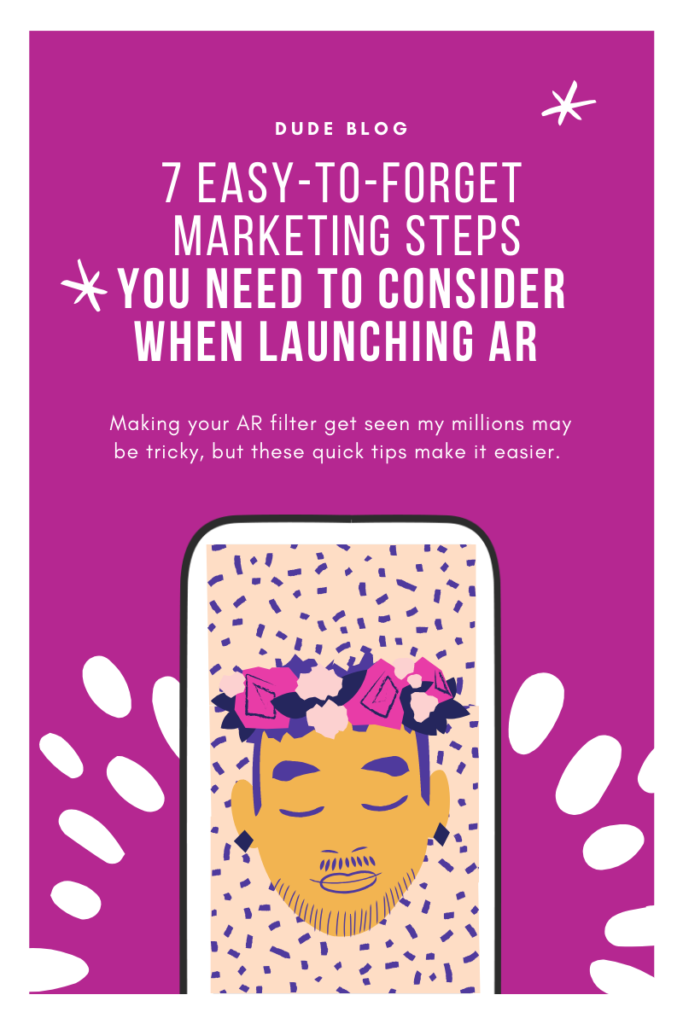
It’s very easy to forget about the basic steps in launching your AR effect that I’m going to outline below, but they shouldn’t be overlooked.
Because the minute we stop taking the time to do them is the minute we stop getting eyeballs on our creations and attracting more people to our brand. The same goes for you.
So let’s start at the top because it’s the most important and may take the longest to explain.
AR Marketing Step #1. Be extra intentional on where Augmented Reality sits in your communication strategy.
You don’t have to really think of how augmented reality on Facebook or Instagram fits into your marketing mix. Every once in awhile there comes a filter that goes viral and seen by millions across the globe in a day by chance.
And if you’ve done your homework to understand the user behaviour on Instagram and Facebook, understand in ins, outs, and how filters go viral and why people play with the same one over and over and over chances are you’ll come up with a novel creation that will follow the lines of Beauty3000, ‘What Disney Character Are You?’ and KiraKira without massive repercussions.
But is it ideal? That’s the underlying question here. Your answer might be, “No, Dude, this is not ideal for us.”
So if it’s not, why not take the time to really map out your strategy in launching this AR filter to be more intentional to your entire communication strategy?
Here’s a quick look at one of my personal filters. I spent hours designing & coding it, then launched it with fingers crossed those other people would find it cool too.
Here is what the results of this Launch & Cross Strategy to this day are.

You can see the devastating numbers when you just launch an AR filter with no strategy.
??= ?
If you really want your boss to give you a pat on the back you’ll want to come prepared with knowing how augmented reality will provide an uptick to the bottom line.
Here’s an example of a project DUDE did in partnership with a well-known restaurant chain.

McDonald’s came to us to build a fun and engaging way to promote their Hello Kitty Carriers that allowed customers to carry their fries and drinks in a sustainable, yet adorable way.
Singapore would be the first country to launch these collector carriers.
Using the iconic Hello Kitty branding assets DUDE built an Instagram Filter that triggered the bow to move when opening the mouth. It was uploaded to McDonald’s Instagram account and shared across owned media channels-
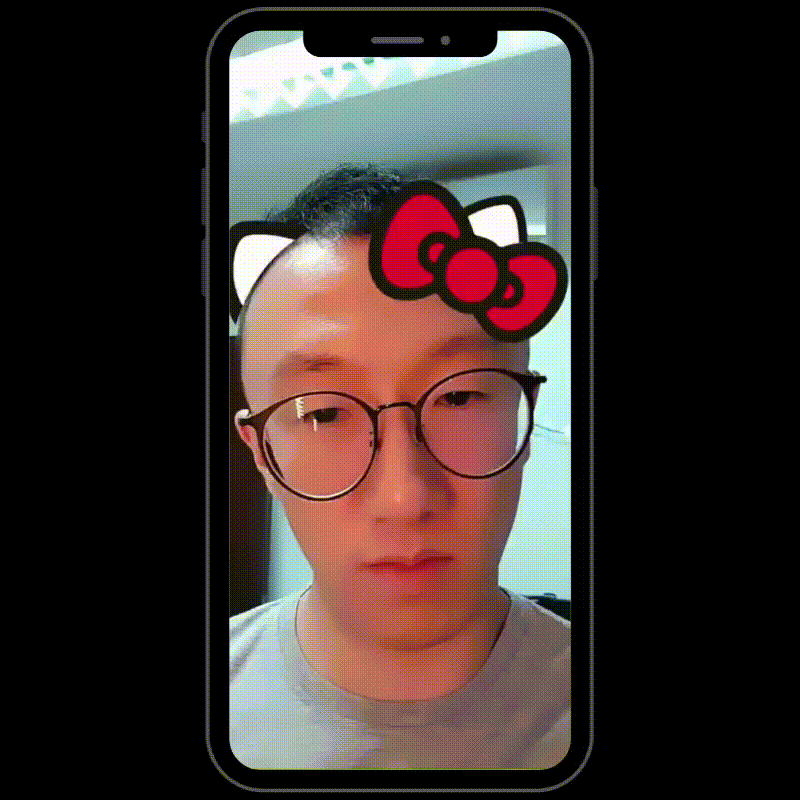
The results? Because they had worked Augmented Reality into their overall communication strategy, the SOLD OUT of Hello Kitty carriers within 48 hours!
The client decided not to promote the AR effect after they sold out but here are some of the analytics from it.

It’s a big difference in results. I used the Launch & Cross Strategy over 2 months ago, the marketing team at McDonald’s got results in 2 days! All it takes is just sitting down with your marketing and communications team to map out a strategy.
And here’s the fun part:
It took me a heck of a lot longer writing this post, making the images, and for you to read it than it takes to create a strategy for integrating augmented reality into your marketing and communication strategy. I’ve been at this for a while working with partners since the inception of the Spark AR platform, so it comes second nature at this point. I often take it for granted.
If you haven’t developed your brand’s marketing with augmented reality strategy yet during planning to launch a filter on Instagram or Facebook, start doing it. Once it becomes a habit, you’ll be able to map it out in no time to convince all stakeholders that your idea to use this innovative technology will get results.
AR Marketing Step #2: Decide if your AR filter will need a URL redirect for future marketing
You might as well take the time to create a redirect URL to ensure longer life of your filters. Typically, you get a preview link from filters to share that may look like this:
https://www.facebook.com/fbcameraeffects/tryit/XXXTheseAreNumbersXXX/
or
https://www.instagram.com/a/r/?effect_id=XXXTheseAreNumbersXXX=XXXTheseAreRandomCharactersXXX=
These links are long, ugly and if there is a problem with that effect for some reason to where you upload a new project file all of your marketing around the filter will have to be adapted.
For this reason, here at DUDE we provide hosting for our partners with a subdomain URL that is dynamic and trackable. You can do the same for any domain.
This is a great opportunity to display your branding with a cute little preview URL when sharing across digital channels.
A long link is cringeworthy. A link shortener is not sexy.
Make your links sexy, branded and easy to remember so your team can pop them in all marketing channels quickly.
Now, on to the next step where you’ll see problems when you only depend on links to share your augmented reality filters.
AR Marketing Step #3: See if you should add a QR scan code
Remember our most important premise when it comes to these marketing augmented reality steps: optimising for people is optimising for filter usage.
A big part of optimising for people is using technology in a seamless way that can be easily understood. How sophisticated technology should be depend on the audience, what kind of mobile device they are using and where they are.
Augmented reality filters on Facebook and Instagram can only be launched and played with on a mobile device. If you are sharing links to the effect online and I happen to be scrolling through Facebook on my computer desktop, when I click on your link I’ll see something like this:
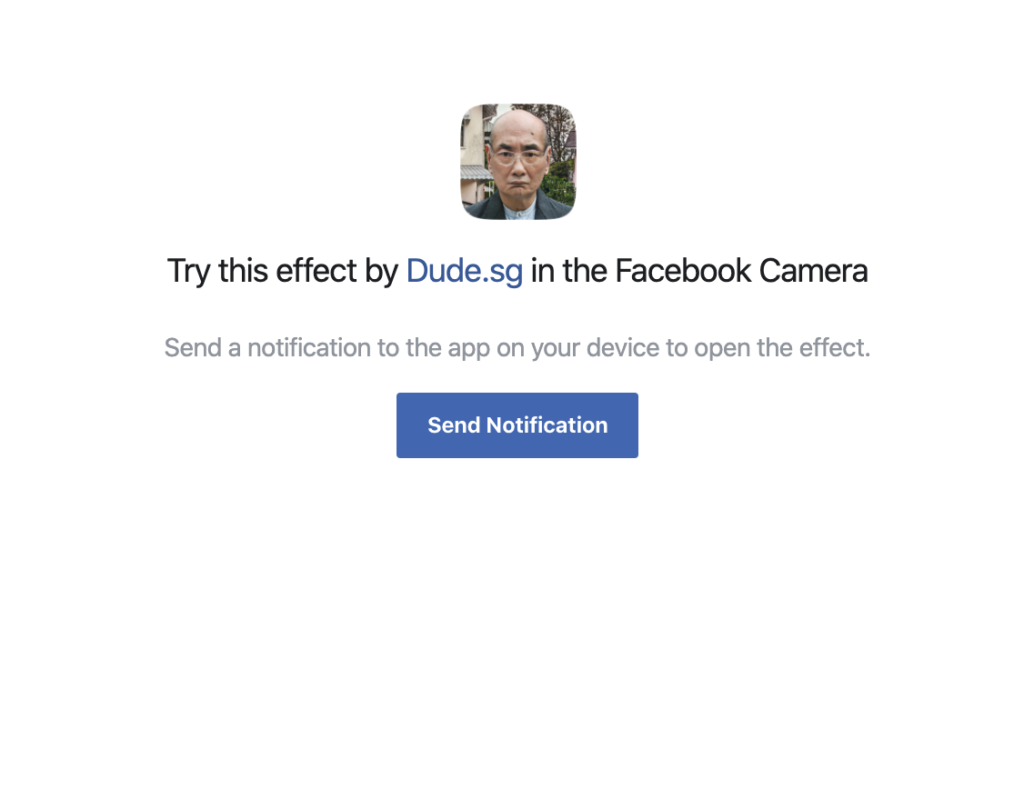
Luckily, Facebook gives us the option to click the button to send a notification to our mobile phone. If you have your phone close to you, it’s going to look like this in your Facebook App.

I didn’t have my phone near me just now so I had to spend a few minutes looking for it. Now, I was committed to showing you this. Will your audience be as committed to try out a filter on Facebook?
Now, let’s take a look at Instagram. While Instagram is a mobile first product, you do find links to Instagram content and view it on desktop. If you share your link to an Instagram effect on a website or even through Facebook you’ll see this:

Now, your audience is stuck! There’s nowhere for them to go next to try out your AR effect. What they have to do is go back & try to figure out how to share the link to their mobile device from where they saw the link in the first place.
What if there was a way to bring desktop viewers to your AR effect on Instagram or Facebook in a relatively easy way?
What if I told you that this way can be done to bring offline audiences like at events or out of home advertising displays to online to use the AR effect?
You would never have to make your audience go through the hassle that I just did making this step-by-step AR marketing guide you are reading right now, that’s what!
All with the help of QR scan codes.
Here’s how it’s done:
Use your URL link, hopefully, it’s the dynamic URL from step #2, and to make a QR code with a free online generator. I like QR Code Monkey.
I showed earlier in this guide a personal project with a QR code scan just in case you are on desktop right now reading this.
If you didn’t get a chance to see how easy it works, here it is in action:

Ensuring that your filter is easily accessible for your audience will give you a greater likelihood of connecting to the experience, keeping them engaged, and improving the success of your campaign.
Which, after all, is the ultimate goal — and in that order.
AR Marketing Step #4: Create eye-popping videos & imagery
If you publish an AR effect on Instagram, how are you going to get people to use it?
You can show and tell them with your owned media channels, social media channels, earned media channels and partnerships with influencers.
What kind of content works best?
Educational hands down! Many people on Instagram know how to use filters but hundreds of millions who don’t know where to find them in the first place. Create videos and Images for regular posts to walk them through learning how to use a cool feature they’ve never tried before.
TEACH YOUR AUDIENCE HOW TO FIND FILTERS IN INSTAGRAM STORIES


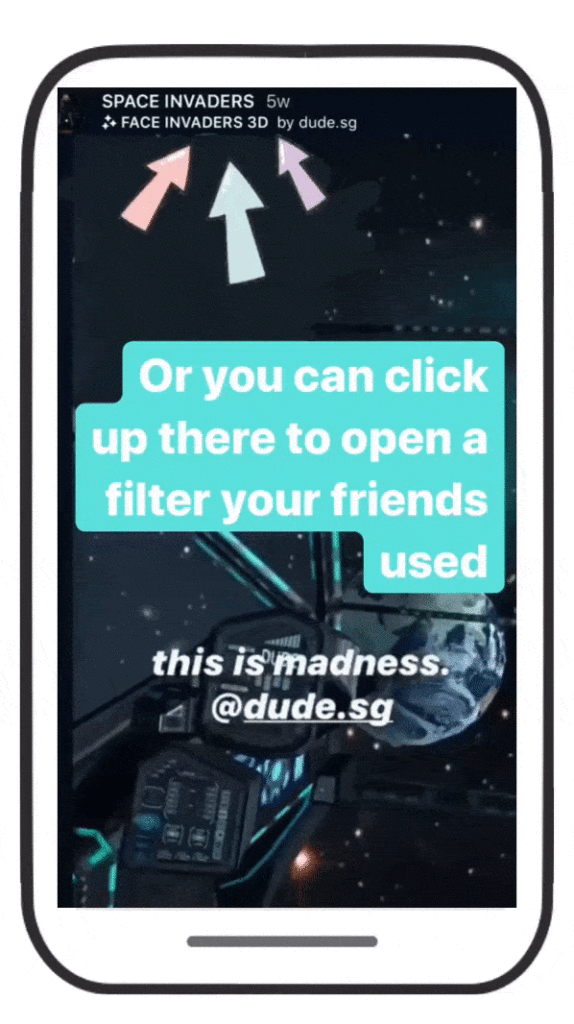
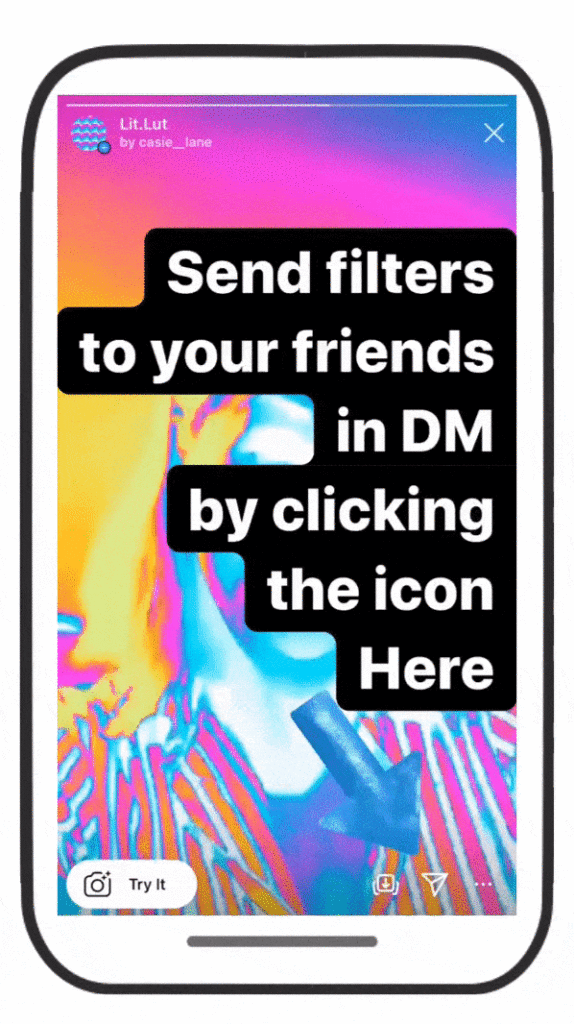

Previous
Next
RE-PURPOSE FOR OTHER PLATFORMS
As you can see here, I created Stories & re-purposed those into video & gif visuals in this article here on our blog.
Where are the smart places you can share your AR effect re-purposed content?
- Maybe as a video in your Instagram Feed with a caption to go to profile
- Maybe as a video on your Facebook Feed with your CTA link
- Maybe in a Linkedin Post sharing what you worked on
- Maybe in a Linkedin or Medium article with your CTA link or Scan code sharing your learnings
- Maybe as a how-to walk-through guest post for a marketing website
- Maybe as an answer to a question on Quora or on Reddit
I could go on.
Especially how gifs are phenomenal for driving awareness through GIPHY and link building to boost your SEO rankings.
My point is, there are many possibilities for places you can share this re-purposed content.
RE-CREATE IN A VIDEO DEMONSTRATION
https://www.youtube.com/watch?v=GQkK2coURBs
Bonus points for collaborating with someone your audience looks to for new tips & tricks!
SHOW PEOPLE’S REACTIONS TO PLAYING WITH YOUR FILTERS
https://ar.dude.sg/wp-content/uploads/2020/04/AR-promo-video-example.mp4
Here is a great example of storytelling done by the Wanna Kicks team. It gets straight to the point, the animation elements catch the eye, they show in-app use and the delightful reactions when playing with the augmented reality experience.
Your creativity is the only limit. Marketing your AR can be implemented with the things you already know how to do with any product, service or offering you have done before. I’m just here to give you a little reminder. 😉
Here at DUDE, we are creating an AR Marketing Toolkit that includes AR Video Ad Creative tips & Copy Templates. If you want to access our beta launch let us know!
AR Marketing Step #5: Use keywords to let Instagram know what the effect is about and how it can help you reach audiences
There is a little known secret here.
Your AR filters can be described with up to 20 keywords. Now to be completely transparent, I don’t have any data on how this works for branded effects as in the discovery page for Instagram filters for brands are not allowed to be featured here. I can assume that maximising all opportunities to be seen with the algorithm won’t hurt.
Here’s what we see when we upload into Spark AR.
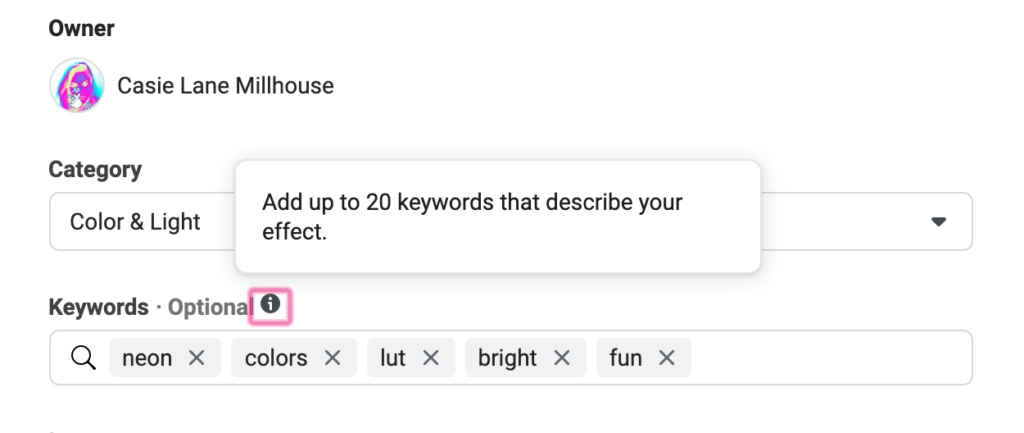
When your Augmented Reality as a service partner or Spark AR developer uploads make sure you give them all 20 of your preferred keywords.
Now, what to prepare for launch.
AR Marketing Step #6: Commit to having community managers to be working round the clock during the launch
We all have hypotheses about how augmented reality filters go viral, how our audiences use filters and the way they find them.
Some of us are better informed than others, depending on the quality of the reading and listening we do.
But all of us could benefit from regularly stepping back, rolling up our sleeves, and doing good ol’ community engagement.
When people play with your filters, especially if they tag your brand, do them right by re-posting their Stories on your Instagram Stories.
Here are super-secret insider walk-throughs from four of our favourite creators. Order of appearance is in no specific order, but you should check them out as well for being so kind to do these demos for us.
Let’s see if you can figure out what is happening on your own.
Viv Galinari – @viv_galinari

Maybe it’s not as hilarious and awesome without sound and you can’t figure it out so here’s another creator.
Kavin Kumar – @rbkavin
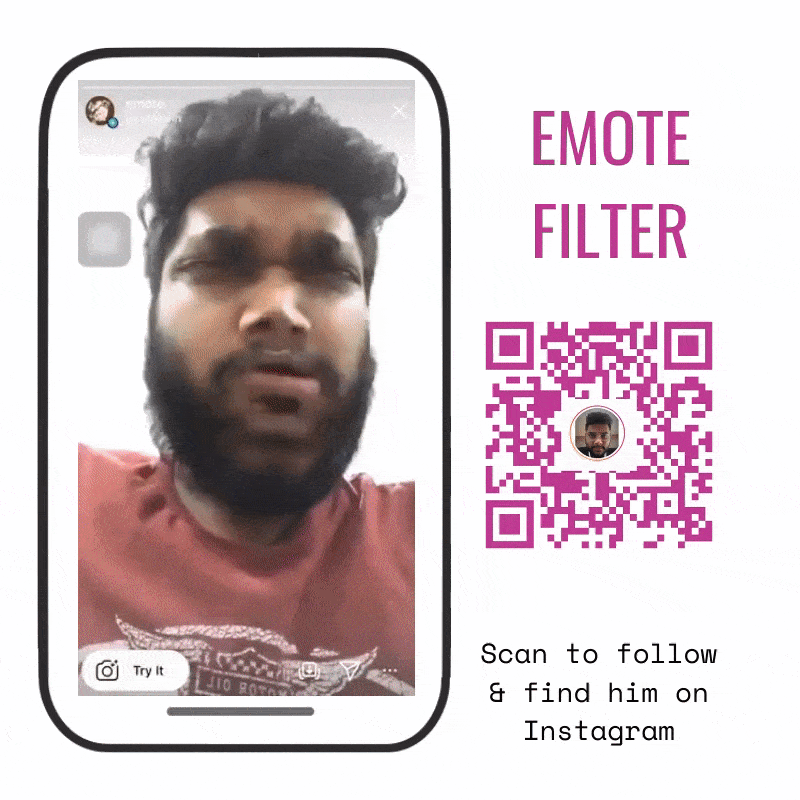
Did you catch it yet?
Here’s another example.
Jerzy Pilch – @jerzy.pilch

You might be saying to yourself, “WTF is goin’ on here?”
Don’t worry, let me break it down for you with an example from Alberto Linares from Everywoah.
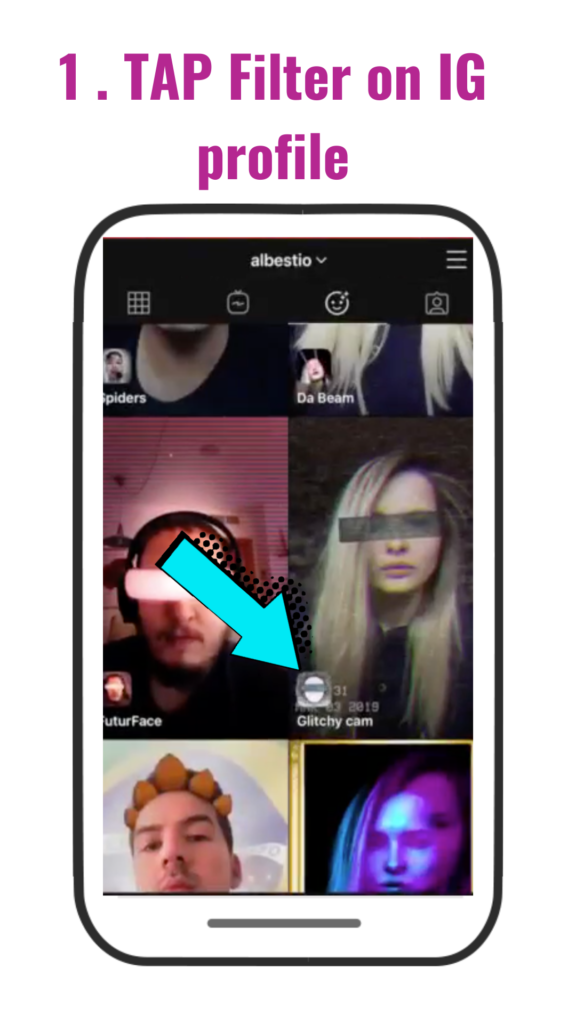
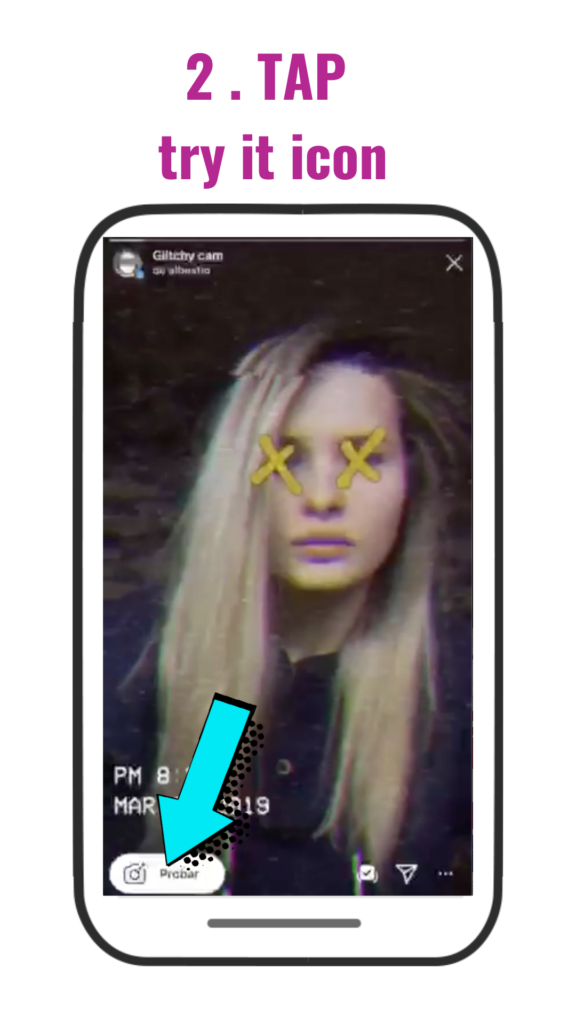

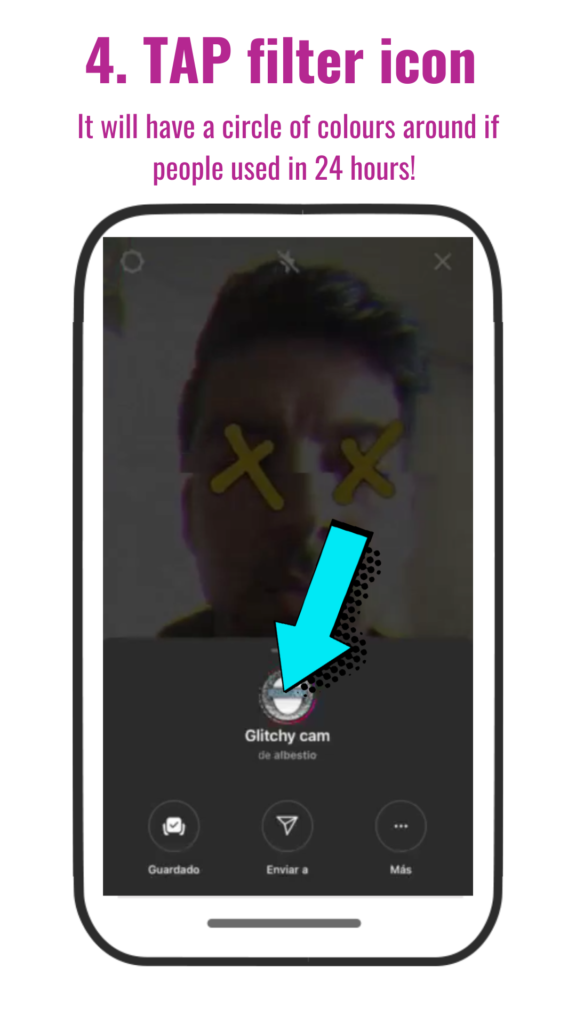
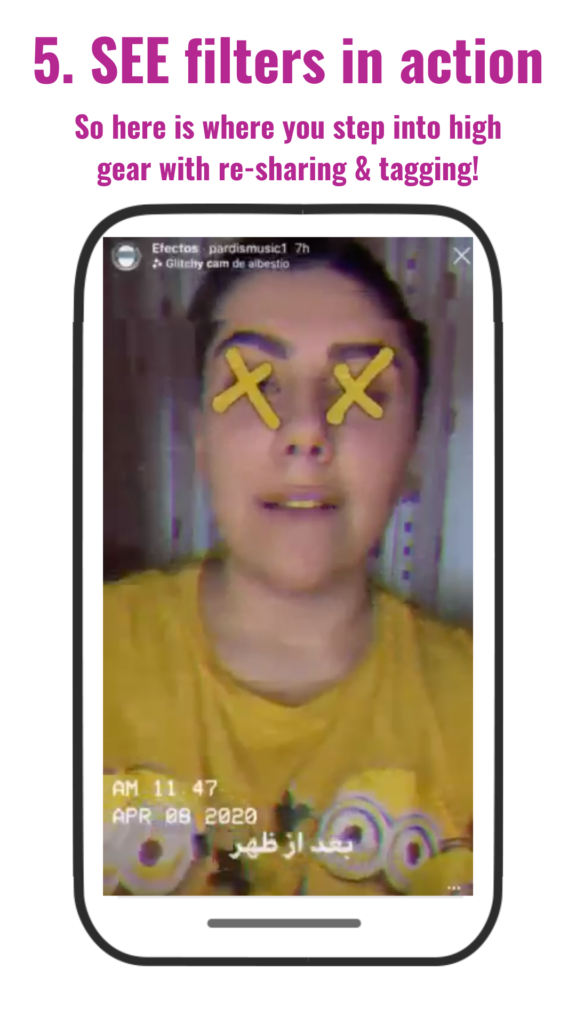
Previous
Next
Here it is all put together again.
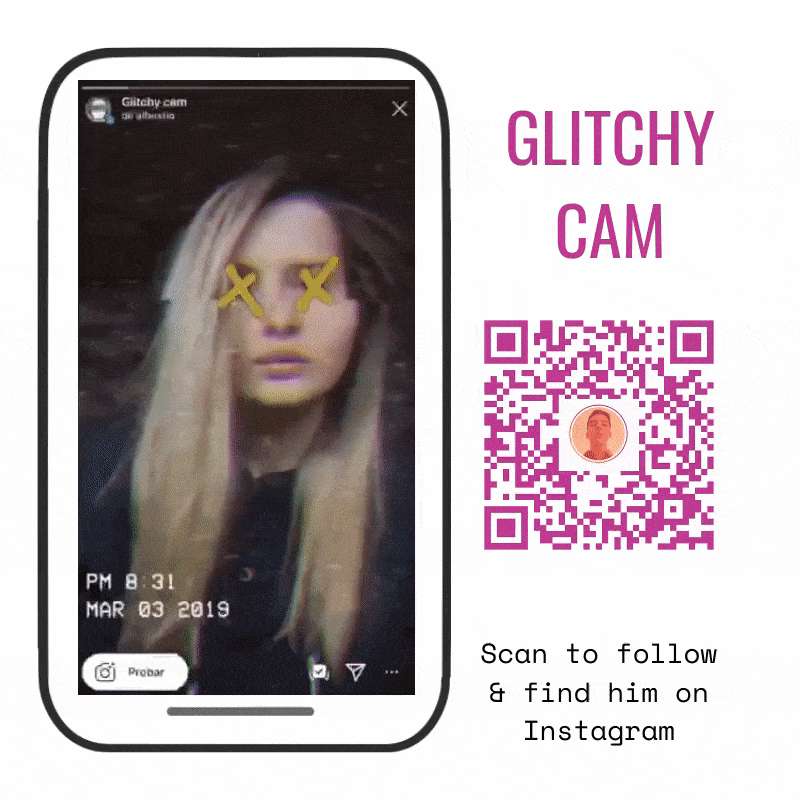
And now, number seven…
AR Marketing Step #7: Pay attention to your audiences’ highest engagement days/times to plan the exact launch and reposting schedules
Remember our most important premise when it comes to these AR marketing steps: optimising for people is optimising for filter usage. I’ve said it before but this needs to be drilled down to be flush with the board.
When you optimise for people, you have to optimise for the time they are online. Optimise for the time they engage with your content.
For example, let’s say you have an exciting promotion coming up for a product launch and you want to use Augmented Reality filters on Instagram to excite and entice people to buy your products. You aren’t going to wait until the day of the launch of this product to launch the augmented reality filter.
You’ll want to create awareness for this launch by creating a filter that is engaging and fun and not going for the sale immediately, but when?
I have no clue, and anyone who says they know is full of you know what!
Only your analytics can tell you when.
Your analytics will tell you the time your audience is most engaged, the days and it will even give you insights as to what audience you should make a filter for.
Females tend to engage in a different way to filters vs. the way men do on the majority. Younger ages tend to be a little more explorative on the platform. Are you wanting to make an AR effect that is a selfie? Do you want to make it with a certain camera style? What kind of mood do you want to convey? Do you want something to interact with surroundings? Do you want it weird or scary? If you have more robust analytics, you’ll get even more insights and match the audience with an experience they will love.
All of this information is just ready for you to dive into. And if you need help figuring it out, schedule a call with me.

Casie Lane Millhouse – DUDEtte Business Manager
Casie is a self-taught marketer and finds herself doing wacky stuff online.
